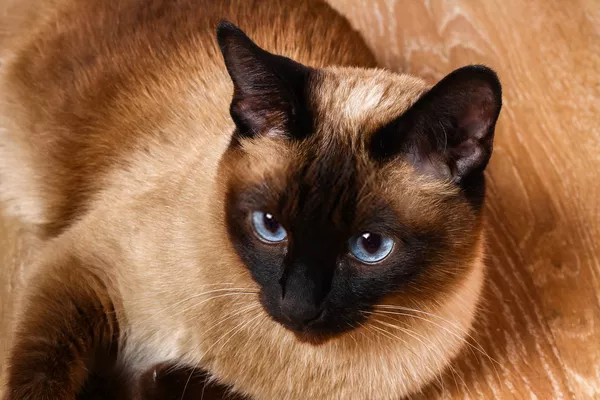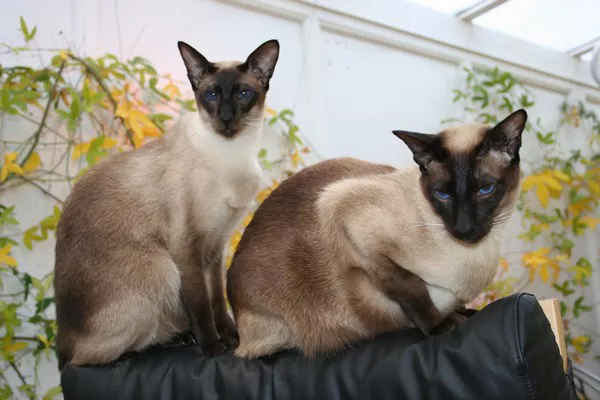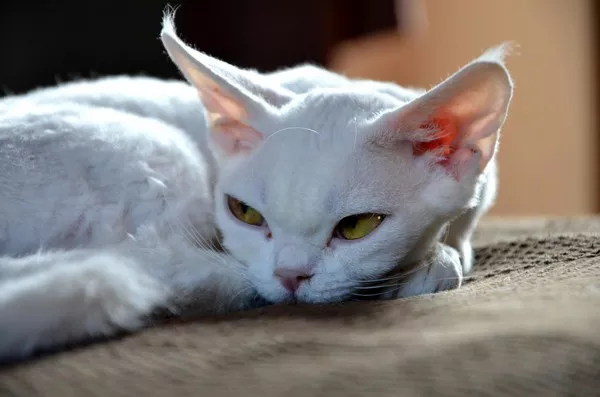Siamese cats, with their distinctive coat patterns and striking blue almond-shaped eyes, are beloved for their unique and elegant appearance. However, cat owners may find themselves perplexed when their once light-colored Siamese cat starts to exhibit a darker hue. In this comprehensive guide, we delve into the various factors that could contribute to a Siamese cat’s change in coat color, offering insights into the genetic, environmental, and health-related aspects of this intriguing phenomenon.
Understanding the Siamese Coat Color Genetics
Siamese cats are renowned for their color-point patterns, characterized by darker coloration on their ears, face, paws, and tail. The specific coat colors and patterns are determined by genetics. This section provides an overview of the genetic factors that influence Siamese coat color, including the role of temperature-sensitive melanin production and the inheritance of color-point genes.
Natural Aging and Coat Changes
As Siamese cats age, it’s not uncommon for their coat colors to undergo subtle changes. This section explores the natural aging process and how it can impact the pigmentation of a Siamese cat’s fur. From the gradual darkening of points to the overall tonal shifts, understanding age-related changes is crucial for discerning between normal variations and potential health concerns.
Seasonal Variations and Temperature Sensitivity
The unique coat coloration of Siamese cats is influenced by temperature sensitivity, a fascinating aspect of their genetic makeup. This section delves into how changes in environmental temperature can impact the expression of coat colors. Understanding the interplay between temperature, melanin production, and coat pigmentation provides valuable insights into why Siamese cats may appear darker during certain seasons.
Dietary Influences on Coat Color
Diet plays a significant role in a cat’s overall health, and it can also influence coat quality and color. This section explores the impact of nutrition on the vibrancy and pigmentation of a Siamese cat’s coat. From the importance of essential nutrients to potential dietary deficiencies that could contribute to a darker appearance, cat owners can gain valuable insights into promoting optimal coat health through proper nutrition.
Environmental Stressors and Coat Changes
Siamese cats are known for their social and sensitive nature, making them susceptible to stressors in their environment. This section investigates how environmental stressors, such as changes in living arrangements, new additions to the household, or disruptions in routine, can impact a Siamese cat’s coat color. Recognizing these stress-induced changes is crucial for providing a supportive and calming environment for the cat.
Health-Related Causes of Coat Darkening
Changes in coat color can sometimes be indicative of underlying health issues. This section explores potential health-related causes, including hormonal imbalances, skin conditions, and metabolic disorders, that may contribute to a Siamese cat’s darker coat. Recognizing the signs of health-related coat changes is paramount for prompt veterinary intervention and addressing the root cause.
Genetic Mutations and Coat Color Shifts
While Siamese cats are known for their distinct color-point patterns, genetic mutations can occasionally lead to variations in coat color. This section discusses the role of genetic mutations in causing unexpected shifts in coat pigmentation. Understanding these rare occurrences sheds light on the genetic diversity within the Siamese cat population and the potential for unique color variations.
Grooming Practices and Coat Health
Regular grooming is essential for maintaining a Siamese cat’s coat health and appearance. This section explores the impact of grooming practices, including the use of specific shampoos, brushing routines, and environmental factors like exposure to sunlight. By incorporating proper grooming techniques, cat owners can contribute to the overall well-being and luster of their Siamese cat’s coat.
Professional Veterinary Evaluation
When a Siamese cat’s coat color change raises concerns, seeking professional veterinary evaluation is crucial. This section discusses the diagnostic approaches veterinarians may take to identify the cause of coat darkening. From skin biopsies to blood tests, a comprehensive veterinary assessment can help rule out underlying health issues and provide guidance on appropriate interventions.
Maintaining a Healthy and Vibrant Coat
Concluding the guide, this section offers practical tips for cat owners to maintain a healthy and vibrant coat in their Siamese cats. From providing a balanced diet to minimizing environmental stressors and staying vigilant for any signs of health issues, proactive care can contribute to a Siamese cat’s overall well-being and help preserve their distinctive coat coloration.
In unraveling the mystery of why a Siamese cat may be turning darker, cat owners can gain a deeper appreciation for the complexity of feline genetics, environmental influences, and overall health. By understanding these factors, they can navigate changes in their Siamese cat’s coat color with informed awareness, ensuring the continued well-being and beauty of their beloved feline companion.


























